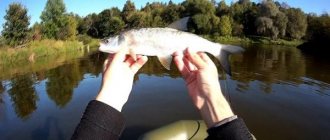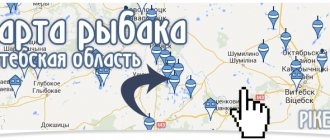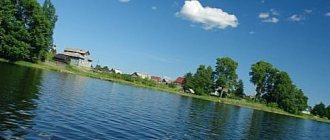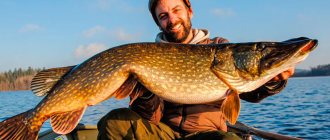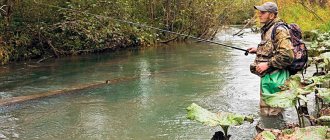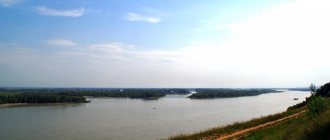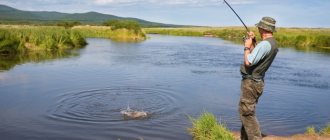The most fishing places in the Omsk region
The Omsk region is a fairly large region located in the western part of Siberia. Like all areas of this strip, it is famous for its picturesque forests, beautiful and clean rivers, a large number of lakes and reservoirs.
The forests of the region will certainly be suitable for those who like to hunt and pick mushrooms or berries, and a large number of rivers and lakes will be attractive for lovers of fishing and active recreation. But not all bodies of water are suitable for fishing, so you need to know in advance where to fish in the Omsk region.
What kind of fish is found in the Omsk region
Fish species familiar to central Russia are found quite often in the vastness of the region. Moreover, they often come across trophy specimens that novice fishermen can only dream of, and even experienced fishermen would benefit from large fish.
Most often, the trophies of fishermen in the Omsk region are:

250 kg of fish for 1 fishing trip
The detained poachers told the secret of their success for a good bite. The fisheries inspectors were so surprised by their lack of poaching equipment.
As you can see, both fans of spinning fishing and fans of float fishing will enjoy fishing in the region. Well, fans of the feeder won’t be bored either. This is what fishing in the Omsk region is famous for - it is universal.
Map of fishing spots
In winter, crowds of fishermen can be seen on the Novoomsky backwater. Definitely, they went in search of peaceful fish, armed with a jig. This is one of the region's most popular ice fishing spots. The bottom is mostly sandy, but sometimes there are areas covered with silt. The depth of the reservoir does not exceed 5 meters.
An excellent place for active recreation and fishing is Amrinskaya Balka. This is a universal place where you can go fishing, go pick mushrooms or berries, or just admire nature. Local residents often relax in this place. The clean clay bottom and shallow depth (about two meters) make this reservoir an ideal place for fishing.
Platovskaya Balka attracts fishermen from everywhere at any time of the day and at any time of the year. And this is no longer surprising, since the reservoir is an attractive place for fishing. Local and visiting fishermen constantly occupy almost all places suitable for fishing. It is best to use a jig as bait, both in winter and spring. The depth of the reservoir does not exceed three meters, and the bottom is covered with a thick layer of silt.
Lake Kadal, although surrounded by steppe, hides good specimens of fish under its water. However, due to the location, the wind constantly blows here, so the place is only suitable for fishing from a boat. A rocky and sometimes sandy bottom with a depth of about 1-2 meters covers promising areas for fishing.
Winter fishing in Omsk
Ice on Siberian reservoirs lasts 4–6 months. Fortunately, the number of fish does not decrease in winter, nor do those who want to catch them.
They catch burbot, perch, pike, pike perch, chebak and sorog using girders and jigs. If you have a license, sterlet is harvested.
Under thick ice over deep holes there is every chance of catching a fat bream. It is in winter that incidents often occur when the trophy does not pass through the hole.
For successful ice fishing, as in any region, it is important to find a place, focusing on the features of the bottom topography. Promising places are in backwaters, quiet backwaters, where the current is slow or absent altogether. There is no shortage of such areas in the Irtysh basin.
Free fishing spots in the Omsk region
One of the most catchy and versatile places for fishing in the Omsk region is the Om River of the same name. The underwater inhabitants of the reservoir always delight fishermen and no one returns from there empty-handed. The river can please fishermen with large bream, crucian carp and carp; trophy rudd is also very common. Fans of predator hunting will enjoy pike fishing.
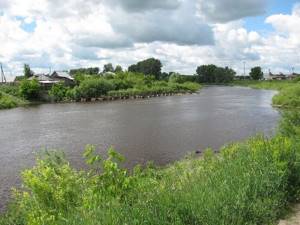
Lake Zhiloye is known among local residents for its abundance of predatory fish; most often pike and perch are caught here. It is better to use live bait as equipment, although wobblers, spoons and silicone baits also catch quite well. The depth of the reservoir in different places ranges from 5 to 17 meters. The muddy bottom is very cluttered, so the risk of snagging is quite high.
Features of fishing in the region
The Omsk region is famous for its reservoirs, which are home to dozens of species of fish. Therefore, fishing is a favorite type of recreation among both local residents and visiting tourists. Travel companies, hunting and fishing centers offer delivery to reservoirs and “fishing spots” by any means of transport, at any time of the year. Here tourists can be offered fishing equipment for rent and advice from an experienced fisherman-instructor. The rivers and lakes of the region are inhabited by grayling, gudgeon, lenok, ruffe, whitefish, roach, muksun, pike, bream, ide, carp, two types of crucian carp (silver and gold), pike perch, burbot, and perch. Crayfish live in some reservoirs with clean, clear water.
Very rarely, Siberian sturgeon and nelma can become prey for fishermen. These species are considered endangered (endangered) and such catch should be immediately released back. Among the permitted fishing means, it is allowed to use a float rod, bottom rod, or spinning rod.
All rivers belong to the Irtysh River basin, which flows from south to north, then turns northwest and crosses the region. The length of this large Siberian river across the region is 1,132 kilometers. Many rivers flow into the Irtysh, but its largest and deepest tributaries are the Uy, Om, Shish, Tara, Tui, Ishim and Osha. A large number of rivers and streams also flow into the tributaries. There are a total of 4,230 rivers in the region.
The Omsk region is famous for its numerous, environmentally friendly lakes; there are more than 16 thousand fresh lakes and almost 4 thousand salt lakes, with varying degrees of water mineralization. In the northern half of the region, overgrown with coniferous taiga and covered with swamps, there are lakes with fresh water. Salt lakes are located in the southern part of the region, among small-leaved forests and steppes. The middle, flat part of the region is characterized by low hills and elongated ridges 1-3 km wide and up to 20-25 km long. The shores of the lakes are overgrown with steppe grass, reeds and bushes. There are also fresh lakes in the middle and southern parts of the region.
Twenty-five lakes have a water surface area of more than 10 hectares, and the area of the four largest lakes (Ebeity, Tenis, Saltaim and Ik) is up to 50 square kilometers. Lakes differ from each other in water transparency. In some lakes the water is crystal clear (for example, in Danilovskoye). But in most lakes, the water has a brownish tint due to the presence of clay particles and silt.
Most rivers and lakes in the region are available for free recreational fishing. Among fishermen, “secret” information about fishing spots and reservoirs where a very good bite awaits is passed on from mouth to mouth. These are many secluded places on the Irtysh, the Achaikha River, which is only 30 km long, and which can be passed by boat in a day, and the artificial lake Amrinskaya Balka. In these reservoirs, large crucian carp and pike, roach, ruffe, and perch are excellently caught. Pike perch is excellently caught on large fresh lakes - Ika, Tennis and Saltaim. Ide lives in abundance in the small and narrow river Ust-Shish. The depth of this river in the lower reaches reaches 14-15 meters.
On small lakes and artificial ponds in the region, fish farms breed golden and silver carp, sturgeon, silver carp and crucian carp.
These reservoirs are also home to carp, small pike and perch. Here, paid fishing is available for amateurs; payment is taken for access to the reservoir and per kilogram of catch. There are more than a dozen such reservoirs - ponds in the villages of Azovo, Karpovka, Irtyshsky, Kharlamovo, Pad, Popovka. Far from populated areas there are Kokorinsky ponds, the Novoivanovskoe fish farm, the fish farm “Fish Place”, an artificial pond between the villages of Sosnovka and Novoomsky, a reservoir on the territory of Omsk State Agrarian University, an artificial lake Amrinskaya Balka, a pit pond at the exit from Omsk (Vorovskogo St.), base "Cool Lake". Paid fishing spots are fully equipped for the recreation of amateur fishermen and tourists. You can come here on vacation with the whole family. Fishing in the Omsk region
Starting from the beginning of November, freeze-up begins on the reservoirs of the region. Already in mid-December, the ice everywhere becomes strong enough to go out on it, drill a hole and try your luck at ice fishing. By the end of winter, the thickness of the ice shell on reservoirs reaches one meter or more. Ice fishing in the region is less popular than summer fishing, the reason for this is low temperatures, from minus 20 to minus 35 degrees, which, with rare thaws, last throughout the winter. However, a few winter fishing enthusiasts constantly go to water bodies. Their catch most often is perch and roach, but with a winter fishing rod you can catch any fish that lives in the reservoir.
Fishing on the Irtysh
The Irtysh River is an important component of the city of Omsk and the entire region. From April to early November, the Irtysh becomes a navigable river. But by mid-November it is covered with ice, which lasts until April.
Fishing in the Irtysh is carried out both in summer and winter, almost without interruption, except for spawning bans. The river ichthyofauna of the Irtysh is very diverse and rich. Representatives of salmon, sturgeon, carp, perch, cod, and pike species live in the waters of this great river.
As for the size of the fish in the catch, it all depends on the skill of the fisherman and his knowledge of the river and the habits of various fish. Some have to catch fish that are not too large, while others can catch real trophy specimens. The catches can include small perch, roach or bream, as well as large pike, catfish or carp.
Summer fishing on the Irtysh in the Omsk region is very productive and catchy. The Irtysh, in the summer, is an excellent place for relaxation and unity with nature. An excellent opportunity for night fishing and fishing in the morning dawns. At the same time, fishing on the Irtysh in summer has many advantages. You can go to the river with friends or with the whole family, enjoy aromatic fish soup from fresh fish, or bake fish over coals in the grill. Such moments are not forgotten for a long time.
One of the key points of fishing is the selection of the necessary attachments and baits, the preparation of bait and the correct feeding of the fishing point. After all, the success of fishing and the size of the catch will largely depend on this. Bait and attachment can be very different, these include maggots and earthworms and caddis larvae and many other insects and their larvae. As for baits, they are also traditional for catching peaceful fish, this is bread crumb. Steamed pearl barley or peas, boiled potatoes, semolina, corn and much more. For example, if the best bait for catching carp is boiled potatoes, then semolina is the best bait for silver carp, and a worm or bread for crucian carp.
However, do not forget that it is better to serve the fish with a bait with a fragrant smell, and it should definitely look more appetizing than groundbait.
Otherwise, the fish will simply be satisfied with the bait and will not pay attention to the bait at all. Fishing in Omsk
Successful fishing on the Irtysh in Omsk largely depends on proper baiting of fishing spots. The bait can be either special branded bait intended for a specific type of fish, or homemade based on various cereals, peas, corn, sunflower cake, mixed feed or crackers.
It is very interesting for fishermen to feed fishing points during the non-biting period. It's hard to believe, but they throw non-branded bait into the water. Or a mixture based on cereals and other food ingredients, and a decoction of large pieces of red brick and various greens. This “bait” miraculously attracts roach, bream, silver bream, rudd and other fish. Moreover, the bite in such a place lasts not one or two days, but 2-3 weeks! And such fishing on the Irtysh in Omsk brings very rich catches.
There are many well-tested and reliable recipes for such “brick” baits. And they are all prepared according to the same principle. Pieces of brick or a whole brick are boiled for about 5 hours, and every hour in the container where the brick is boiled, the greens, garlic, wormwood, dill, currants, ferns, raspberries and other herbs, and leaves of bushes are changed. Next, the brick boiled in this way is coated with sunflower oil. This bait can be used several times. To do this, pieces of brick can be removed from the water and wrapped in cellophane bags. If an angler constantly fishes in the same place, then he boils several bricks at once, and then lays them out at different depths while fishing. Thus, you can even prepare a place for winter fishing.
Fishing in Omsk on the Irtysh in spring is also very remarkable. Bream and other white fish are caught especially well at this time. Burbot is also well caught in the Irtysh in spring. To successfully fish for burbot, anglers go fishing in the evening and return home in the morning with decent catches.
The fish likes to hide in snags and underwater bushes, and anglers take this into account when feeding fishing points. When it is a clear and fine day, the bite, as a rule, begins from the very early morning. But if the weather is cloudy, then the bite is often guaranteed throughout the day.
Types of fish in the Irtysh
Fishing in the Irtysh in the Omsk region is carried out for a wide variety of fish. The ichthyofauna of this river is very diverse: Siberian sturgeon, carp, bream, crucian carp, carp, Siberian vendace, nelma, pike perch, ide, burbot, pike, perch, whitefish and others.
The most popular places for fishing on the Irtysh in the vicinity of Omsk are Rybachye, Nikolaevka, the territory of the ship repair yard, Beregovoe, Lake Cheredovoe, and the Supgutskaya base.
The Irtysh in Omsk will attract fishing for large pike, carp and grass carp. But there are not many fish like crucian carp, perch or silver carp here. However, these types of fish live in abundance in the reservoirs of the Muromtsevo region. First of all, it is recommended to visit the Artyn fishing base, which is located on the Artynka River, and reservoirs in the village of Kostino. These places abound with large crucian carp. On the Tara River and in lakes Danilovo, Shchuchye, Linevo, there are a lot of chebak, bream and perch. Fishing on the Irtysh River
One of the fish tributaries of the Irtysh is the Om River, it flows through 4 Omsk districts. However, from the point of view of local fishermen, the richest area in fish is the Kormilovsky district. Here you have the highest chance of getting significant catches of ide, carp, chebak, tench and crucian carp. On the left tributary of the Irtysh, the Osha River, large crucian carp are excellently caught.
Due to the fact that for a number of reasons (poaching, water pollution, etc.) there are fewer and fewer Siberian sturgeon and sterlet in the Irtysh, the rules for catching this fish have been tightened. Thus, due to poaching, up to 50 tons of sterlet are caught annually in the waters of the Irtysh. And only 3-4% of this fish ends up spawning. Therefore, catching this fish is only possible under licenses.
Fishing on Lake Ik
Lake Ik is located in the north-west of the Omsk region, 53 km from the railway. Stations. In the vicinity of the village of Krutinki, the lake looks like a narrow strait, and then widens to about 1 km, and Lake Ik ends near the village of Kalachiki, 8 km from its beginning to the north. There are good approaches to the lake shore and fishing from the shore is very convenient. The shores around the lake are very beautiful and picturesque.
In summer, the banks are covered with carpets of bright, beautiful vegetation with numerous flowers, from which an amazing aroma emanates. The lake has many shallows where fish like to feed and deep holes where predators often lurk. The lake abounds in large perch; it is perch that is primarily used for fishing in the Omsk region on Lake Ik.
It is very interesting to catch perch in a reservoir in the summer, but the highlight of this lake is winter fishing for perch. Local fishermen, going fishing on Lake Ik for several days, came up with an ingenious way to protect themselves from the steppe winds that rage in the “snow houses” in the middle of winter. They are a free alternative to modern fishing tents. But snow houses have been built since time immemorial.
Experienced fishermen place such houses only at the most catchy holes. It is not difficult to build such a house. At the beginning of winter, when thaws are not uncommon and a strong snow crust forms on the snow, pieces like slabs are cut out of the snow with a wooden or iron shovel. 3 walls are laid out of such snow slabs around the fishing holes, the height of which should hide the fisherman’s head. Snow houses are not built higher, as they will quickly collapse. The entrance to such a house is always on the south side. Walls can also be made from ordinary snow, pouring water on them in mild frosts. They try to build the walls in a streamlined shape; they can better withstand strong gusty winds and are more stable. Many people equip their houses with special ledges for sitting, on which cotton wool mattresses are laid.
Local fishermen also have an unwritten rule not to occupy other people’s houses. Many anglers have 6-10 permanent holes. When fish are not caught from it, in order to avoid freezing, the hole is covered with a thick layer of snow.
Quite often, local fishermen go out on the lake with the whole family.
Among fishing enthusiasts there are people of various specialties, young and old, men and women. On such trips they take with them dogs, huskies, mongrels, in a word, whatever they have, they are harnessed to light sleighs. They go to the lake empty, and bring back sleighs full of frozen perch. Fishing on Lake Ik
They fish with ordinary winter fishing rods with a reel and a nod, a line no thicker than 0.2 mm in diameter, they use jigs, shot from an alloy of tin and lead, and jigs (amphipods) are used as bait. The working depth is approximately 3 meters, a little more in some places, a little less in others. The quality and quantity of the catch depends on the ability to play with a jig. Frequent bites are felt well, the perch, as usual, takes correctly and greedily.
But fishing in the Omsk region for perch in the waters of Lake Ik is carried out using a homemade spoon made of silver or brass, which is handmade by local craftsmen. These baits are called samolov spinners; no bait is required for such a bait; fish are attracted by the shine of the copper wire and the bait itself. The largest specimens of perch are caught with this bait.
And although, as a rule, large specimens are caught on lures, many fishermen still prefer fishing for perch in the Omsk region on Lake Ik with jigs. Bites occur much more often, landing fish is more interesting, and besides, large perch often bite on the jig. True, due to the thin equipment, breaks occur, but this does not upset the fishermen, but only adds additional excitement to fishing.
Local fishermen store their catch in a very original way. Many people set up special “storerooms” made of ice near the holes, and fish from these storerooms are transported home on dog sleds. From part of the catch, fish soup is boiled or fish is fried over a fire in frying pans or baked in coals, and the main catch is sent to the pantry.
Fishermen equip such winter storerooms in January and use them until the end of April. They are equipped in this way: a niche of arbitrary size is cut out in the thickness of the ice, and the entrance to the storeroom is made from the north side. Such a catch can be stored in a storage room from several days to 1-2 weeks, depending on how long the fisherman stays on the lake.
Winter fishing on Lake Ik in the Omsk region is an excellent opportunity to enjoy catching large perch and spend time surrounded by the harsh but beautiful Siberian nature.
The best places for paid fishing
You can go fishing in the Omsk region as a savage, or you can visit fishing bases. There are quite a lot of such bases in the Omsk region, but only a couple of them can be called the best:
- “Cool Lake” is the name of the base where you can have a great rest and fish. It is valid all year round. “Cool Lake” is located in a place with a very picturesque landscape next to two lakes. This fishing base is ideal for those who do not want to travel long distances: fishing can also be done within the city. You can get to Cool Lake not only by private car, but also by public transport. The base provides organization of family holidays or holidays for a friendly company. Fishing here is for carp and carp, crucian carp, catfish, pike, silver carp and even sturgeon, but you can only fish from the shore.
- You can also have a good time on Lake Chertaly, which is located near the village called Priozerok. It doesn’t take long to get to the lake: from Omsk to Priozerka it’s worth covering the distance where there are only 7 villages. Fishing here is carried out mainly for predatory fish: pike perch, perch and pike. But this place is not only for those who like to fish with artificial baits: feeders will be able to catch good crucian carp. However, a certain distance from the city is upsetting, but it is very much worth it with the opportunity to fish not only from the shore, but also from a boat.
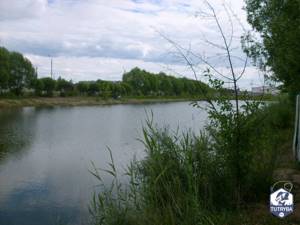
Fishing at paid fishing bases can be paid for in different ways. Some bases only provide access to a reservoir and require very modest sums for this. And others provide a wide range of services, including renting temporary housing, providing fishermen with equipment, fishing equipment, and food. Some bases are designed for family holidays or holidays with friends. So, to visit the “Cool Lake”, you should have a lot of money with you, since to carry out 1 kilogram of fish you will need several hundred, but on Lake Chertala you will have enough of a modest amount to pay for a fishing spot per day.
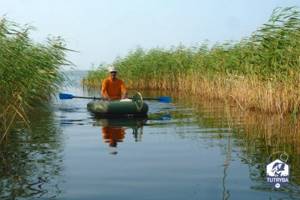
Little tips

The Irtysh River is home to a variety of fish, which indicates the wealth of this river. And although recently there has been a sharp trend towards a reduction in the number of fish in the Omsk region and, in particular, on the Irtysh River, due to objective and subjective reasons, if you use a number of recommendations and advice, then even today you can count on a catch. That's why:
- You need to be able to find fishing spots. There is no need to be afraid to move from place to place. Fishing these days is a constant quest.
- There is no need to create a lot of noise on the shore. Fish are generally attentive and cautious. This is especially true for large specimens.
- You definitely need to stock up on bait, because without it you can’t catch fish these days.
- Smart nozzle selection can make all the difference.
When going fishing within the Omsk region, you should remember about the ban on catching valuable species of fish. Failure to comply with or completely ignore the laws results in administrative or criminal liability.
Igor 02/26/2018
Free fishing spots
If you are going on vacation in the Omsk region with a fishing rod, but do not want to pay for it, you should consider several options for places to stop. The best places for fishing are:
- The Irtysh River near the village of Novoomsk is the most catchable place where you can catch crucian carp or ruffe. Fishing is done both from the shore and from a boat;
- You can catch crucian carp, carp, pike and perch on the Irtysh near the village of Krasnoyarka. You can fish here both on the shore and on a boat. You can cook fish on prepared grill areas. The Kolos sanatorium is located nearby;
- There is another fishing place in the Omsk region - the Om River near a village called Kormilovka. But here you can only catch carp and crucian carp. Therefore, this is a real haven for those who like to fish with a spring or feeder from a boat or shore;
- Uvalnaya Bitiya is a village next to which Lake Zhiloye is located, where predatory fish are found: perch and pike;
- Lake Ik, which is located near the village of Kiterma, is famous for its excellent fishing for crucian carp. This lake is 12 kilometers long and 8 kilometers wide. The bottom of the lake is very flat, it is completely covered with silt deposits. There are no other fish except crucian carp here;
- Lake Linevo is located far from populated areas in the Muromtsevo region. The nearest settlement is the village of Nadezhkino. Fishing here is for roach, tench, bream, pike and perch;
- In the Muromtsevo district of the Omsk region there is another large lake: Shchuchye. It is located closer to the village of Nadezhkino, but not far away there is a paid fishing base, named after the lake mentioned above - Linevo. Here you can catch pike, perch, roach, tench and bream;
- Particular attention should be paid to Lake Danilovo, which very much resembles a mountain reservoir. Its depth is 17 meters, and the water in it is so clear that you can see the bottom of the lake if it is no deeper than 5 meters. Aspen, birch, and pine trees grow along the banks of the reservoir. But there is no aquatic vegetation in the lake itself. Here you can catch carp and crucian carp, as well as chebak, pike and perch. Near the lake there is a village called Kurganka;
Review of free fishing reservoirs in Omsk and the region
- Lake Ik near the village of Kiterma. Smooth bottom, completely covered with silt. It is famous for its excellent crucian carp, but there is no other fish in it.

Lake Ik
- The Shish River in the Znamensky district. The taiga river with a winding channel is inhabited by chebak, ide, perch, and pike.
R. Shish
- Lake Danilovo near the village of Kurganka. Its purity resembles a mountain lake. Despite the significant depths (there are areas up to 17 m), the bottom is visible through the water column. The catches include perch, pike, chebak and crucian carp.
- Amrinskaya ravine near the village of Platovo. Freshwater Lake and its surroundings have the status of a natural monument in the Omsk region. In addition to excellent crucian carp fishing, these places are famous for mushrooms, rare medicinal plants and berries.
- Platovskaya beam. The muddy and shallow reservoir used to attract fishermen with dynamic fishing for crucian carp and perch in open water. After the successful stocking, people began to come to Platovo for pike. Even in winter, ice fishing enthusiasts come here every day from all over the region. The traditional tackle is the jig. In the summer, the championship goes to feeder fishing.
- Lake Kadal near the village of Vorontsovka. The reservoir is inhabited by a large population of crucian carp. But it is caught only in reed thickets, which can only be reached by boat. A fishing rod with a side nod is used. The corn attachment allows you to cut off small things and catch only large crucian carp.
- Lake Zhiloye near the village of Uvalnaya Bitiya. People come here for pike and perch.
Where to go fishing in the Omsk region?
Today, the Omsk region has an impressive number of lakes and rivers, where you can both go fishing and enjoy incredibly stunning scenery.
According to statistical data, social surveys, reviews, referring to a lot of information materials, it can be argued that the Omsk region is a leading region that annually welcomes thousands of citizens to its reservoirs who are eager to go fishing.
In order to simplify the task for fishermen who are looking for a decent place for fishing, it would be a good idea to outline the most popular and visited bodies of water in the region.
In the Omsk region, as in all regions of the Russian Federation, there are fewer rivers than lakes, but this does not mean that if you really want to, you cannot find a secluded place on the shore of a reservoir for the purpose of fishing with a small group.
So, for the attention of readers, a list of the most famous and catch-bearing rivers:
- The Irtysh is a river inhabited by such fish as chebak, roach, crucian carp and carp. Fishing is good along the entire length of the river, but it is noted that if you settle in the village of Krasnoyarka, you can get a significant privilege - on the territory of the village, near the shore, there is a barbecue area where you can immediately prepare the “catch”;
- Om is a river whose name is quite symbolic for the Omsk region. Fishermen who fish in this reservoir succeed in catching carp, which are quite large in size. Experienced fishermen already advise that if you really want to enjoy a good catch, you should fish in the village of Kormilovka;
- Ishim is a river with a rather peculiar name, the peculiarity of which is considered to be its extraordinary and record depth for a river - up to 15 meters. The highest fish activity was recorded in the village of Novoyagodnoye, where local fishermen most often gather;
Om - a river in Western Siberia, photo and description
Om is a river flowing in Western Siberia. It belongs to three basins at once: the Irtysh, Ob and Kara Sea. The first information about the Omi River can be read in the Siberian Drawing Book, which was compiled in 1701 by Semyon Remezov. Our article will talk about the Omi River, its features, geographical location and interesting facts about this reservoir. Well, now in more detail.
Name
The Om River got its name from the Turkic word for “quiet” (“om”). And in the Irtysh region and Barab, the local population calls it diminutively: Omka.
Location
Lake Omsk, where the Om River originates, is located among the swamps in the Vasyugan Valley and is the source. Further, the river stretches along the Barabinskaya lowland. The mouth of the Om is located in Omsk, on the right bank of the Irtysh.
Description of the river
The catchment area of the Omi River is 52,600 square kilometers. The average water flow per year is 64 cubic meters per second, and the maximum is 814. The length of the Om River is 1091 kilometers. In Soviet times, ships sailed along the river from Kuibyshev to the Ust-Tarka pier. Currently, the Om is not included in the list of important Russian inland waterways. Main tributaries of the river:
- Achairka.
- Icha (upper and lower tributaries).
- Gourmet.
- Uzakla.
- Kama.
- Tarka.
- Tarbuga.
- Tartas.
Small-tonnage vessels sail along the river, but only starting from the place where the Tartas flows into it. In the upper reaches the river flows through swampy and forested areas. Then the steppe begins, and on the banks - the first settlements. Then there are more and more of them, cities appear. Many fishermen are interested in the question of what kind of fish is found in the Om River. It contains a lot:
- sterlet;
- nelma;
- vendace;
- pike perch;
- pike;
- perch;
- crucian carp;
- roaches
river valley
The river valley is unclear, the slopes merge with the surrounding area. Apart from the upper reaches, it looks like a trapezoid, in some places asymmetrical. The width of the valley ranges from two hundred meters to eighteen kilometers. In the upper reaches the slopes are gentle, and in the lower reaches they are steep and sometimes steep. There are plowed ones.
Omi floodplain
The river's floodplain is two-sided, in some places swampy and crossed by separate ridges. Below is one-sided. The minimum width of the floodplain is two hundred and fifty meters, the maximum is sixteen and a half kilometers.
The width of the Omi channel at low water ranges from 40 to 84 meters. In some places on the bends - from 110 to 220 m. The depth on the rifts is from 0.3 to 1.5 meters, and on the reaches from 2 to 4.1 m.
The current is quiet, its speed is from 0.3 to 1.4 meters per second. The channel is unclear, extending five kilometers from the source.
This stretch looks like small extensions in the form of mini-lakes that connect to each other. And the lower channel is unbranched and very winding.
Features of the river
Om is a river fed by melting snow. The flood begins in May and lasts until July (sometimes inclusive). Freeze-up begins in late October or early November. The ice begins to melt in April or early May. The low-water banks are open and bushes grow wildly on them.
The width of the Omi varies in the upper reaches from 15 to 25 m, in the middle - from 150 to 180, and in the lower reaches - up to 220 meters. The depth can vary from half a meter to 5.5 m in the lower reaches and from 0.2 to 3 m in the upper reaches.
In 1982, at the mouth of the river, during dredging work, a barge sunk by Kolchakites was discovered. The sinking occurred in 1918. Artillery ammunition was found on the barge. A dam was built around the sunken ship. From 1982 to 1984, sappers removed, removed and detonated ammunition found on the river bottom.
Near the place where the Om flows into the river. Irtysh, archaeologists found an ancient settlement called Bolshoi Log, with an area of 2500 square meters. Dwellings, implements and ceramics of the late Kulai appearance were found. In addition to this ravine, there are several others that flow into the Om: Ubiennykh, Syropyatsky, Kornilov and two Bezymyanny (near the small village of Samarinka and the regional center of Kormilovka).
Ecology
Om is a river that is capricious in spring. It overflows heavily and drowns the nearby plains. In the eighties, the river even “bloomed”, becoming covered with lush vegetation. In order for ships to pass through, it was necessary to clear pile fields and dams. Hovercraft were launched to disperse the standing water. They swam to the village of Syropyatsky.
Photos of the Om River show that in recent years it has begun to rapidly become shallow. Water comes into it from the Vasyugan swamps and Novosibirsk lakes. But every year the influx is decreasing. And there is an increasing water shortage.
In the federal program for providing drinking water to Russian citizens, which was adopted back in 1999, the completion of the construction of the Om-Irtysh canal was given first place in the Omsk region. And also the construction of a reservoir near Kalachinsk.
The main canal was designed and almost built during the Soviet period. It was seventy-five percent complete. Initially, its development was carried out as part of an irrigation system. This project was approved by the Ministry of Water Resources in 1980, on November twenty-fifth. But after some time it was separated into a separate, independent one.
The most important tasks during the construction of the main canal were the water supply of irrigated land plots in the Om riverbed over an area of fifty-one thousand hectares. As well as a constant supply of drinking water to the Nizhneomsky, Omsky, Gorky, Kalachinsky and Kormilovsky districts.
The main canal, whose length is 53,900 kilometers, originates two kilometers from the village of Isakovka, located in the Gorky region. The last 14,800 meters fall on the river bed. Achairki. Two pumping stations were also built.
Source: https://FB.ru/article/248243/om—reka-v-zapadnoy-sibiri-foto-i-opisanie
Paid fishing in the Omsk region
Today, many private entrepreneurs and even some government agencies, on the basis of a small abandoned building, open fishing bases, which in modern times are frequently visited. Naturally, such pleasure is not free, although it is very comfortable and truly unforgettable.
TOP 5 best places
Whatever one may say, no one has canceled the ratings, even in fishing, therefore, for the attention of the reader, a number of “fishy” places where you can both relax and go fishing:
- Fishing place is a fishery with a telling name. Allows its visitors to be content with catching sterlet, carp and catfish. Location: center of Omsk;
- Kornilovskaya Balka is an amazing territory with extraordinary nature, it includes an artificial reservoir inhabited by perch, pike and trout. The cost of daily fishing on the territory is 150 rubles per person;
- Fishing near Vasilich is a small but fairly visited fishing base. Its peculiarity is that the artificial pond is filled exclusively with elite fish: trout, sturgeon, mirror carp;
- Cool place - the name is completely true, because the considerable price for a day’s stay at the base (from 1,200 rubles) is justified by good cool, decent living conditions and the opportunity to rent a boat or boat;
- Poludenny is a fishery located half an hour’s drive from the regional center, Omsk. The pond located on the territory of the farm is filled with one single type of fish - crucian carp, of which there is quite a lot in the reservoir;
As for the pricing policy, we can say with confidence that it is much lower than in other areas, which is possibly due to the high competition “in the fishing market.”
But, it is thereby noted that there are bases where the cost of daily fishing is off the charts - it depends on the list of services provided, living conditions and types of fish.
Therefore, the advice to citizens would be to visit the official website of the base before visiting it, which will allow them to familiarize themselves not only with prices, but also with services, location and reviews about it.
Nothing new can be said about the rules, because they are often the same:
- The export of fish from the territory of the base is prohibited if its weight exceeds the stipulated norm, which was paid earlier;
- Littering on the territory of the base, and even more so throwing any waste into a body of water, is strictly prohibited (a substantial fine is provided);
- The use of bait with a chemical component is prohibited, as this can harm the inhabitants of the reservoir.
What kind of fish is caught on the Irtysh?
In winter, fishing lovers on the Irtysh also have plenty of work to do. The peculiarity of the river is that for almost six months - from November to April, it is under ice. Fishermen on winter fishing will be pleased with the catch of bream, roach, and chebak. In the upper reaches of the river, night fishing for burbot is popular. Fishermen's tents on the ice at night are a familiar sight for residents of coastal villages.
Bream is caught in deep holes in winter, so knowledge of the topography of the river bottom is the key to the success of such fishing. Mostly they fish vertically with winter fishing rods, and use jigs for pike perch and pike perch.
They fish on the Irtysh using all known gear: there are fans of feeder fishing, float fishing remains a classic, spinners have their own arsenal and fish mainly from a boat, fly fishing, Bolognese gear, donka - every fisherman can realize his fishing preferences on this river.
Next is a magnificent video about fishing on the Irtysh in Omsk.

